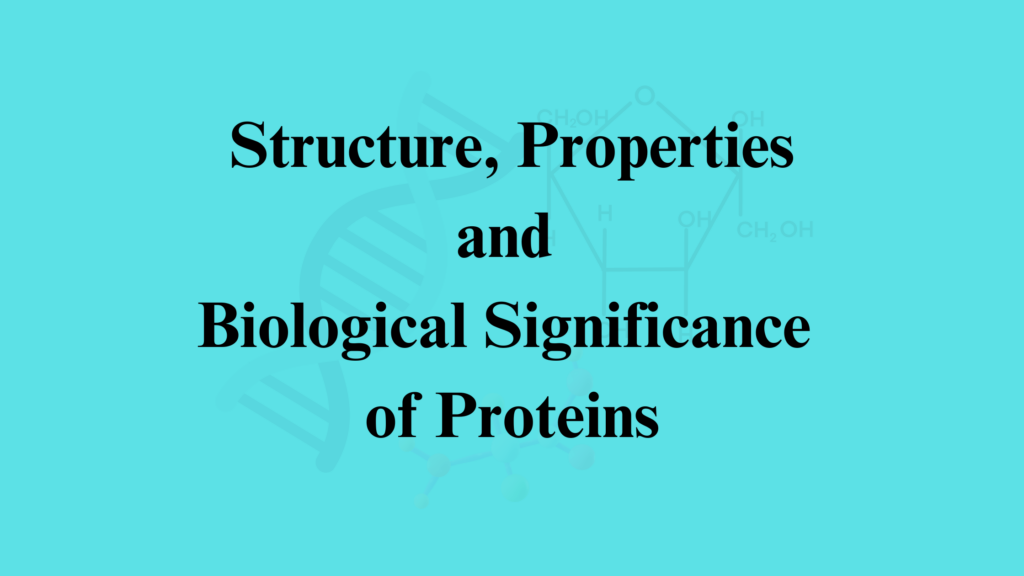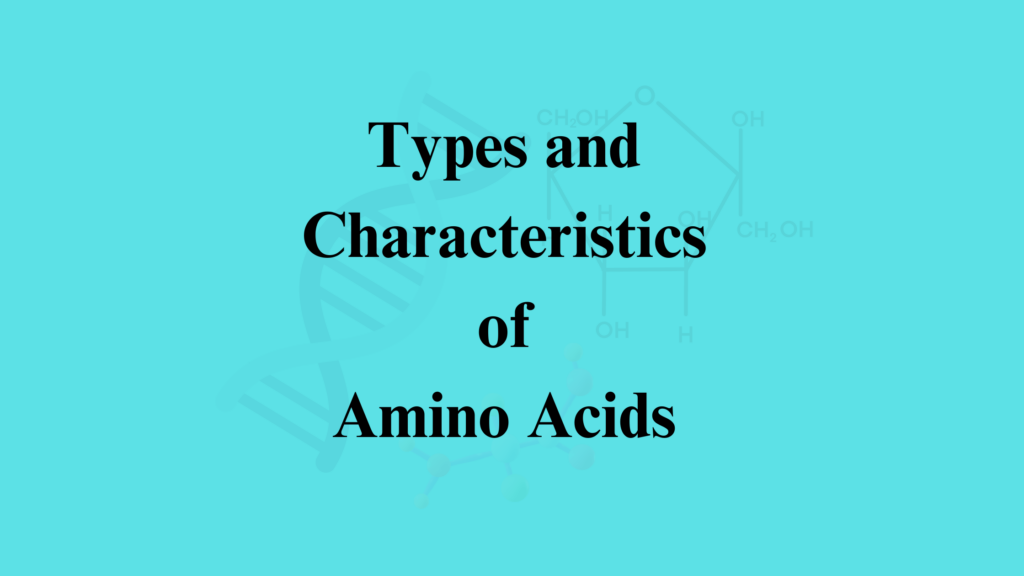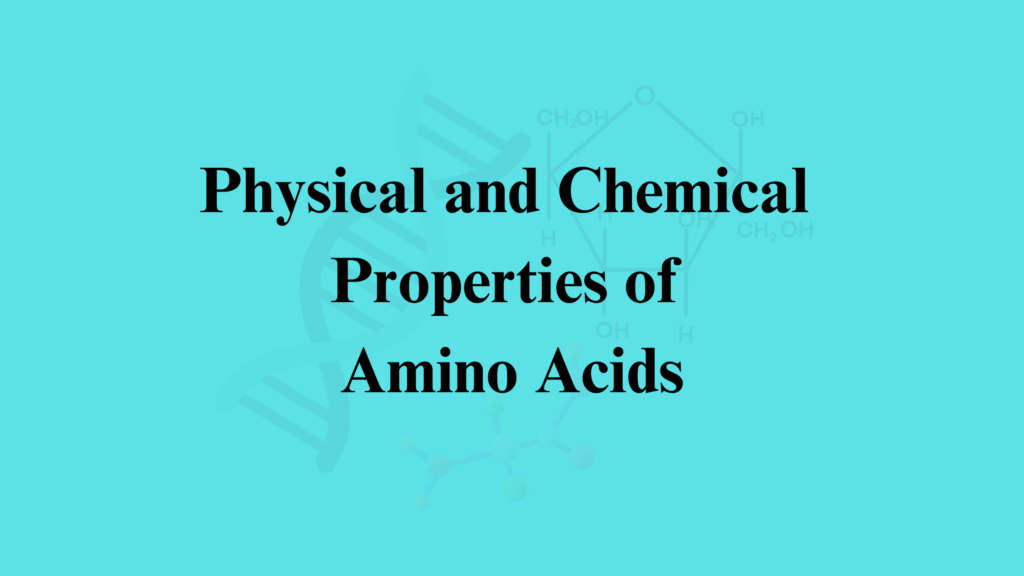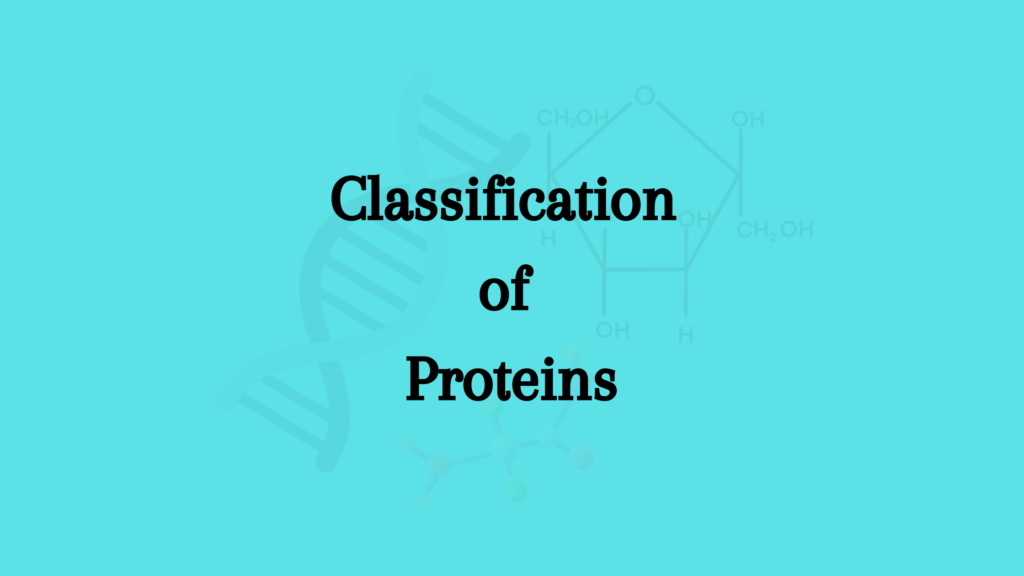Structure, Properties, and Biological Significance of Proteins
Proteins are one of the most essential macromolecules that are responsible for the various biological processes inside a cell. Proteins are nothing but a long chain of amino acids joined by peptide bonds. A protein molecule can have hundreds or thousands of amino acids in its composition. The sequence of amino acids is determined by the nucleotides of the gene responsible for that particular protein.
Definition of Protein
Proteins are organic nitrogenous compounds in which a large number of amino acids are joined together through peptide linkage to form a long polypeptide chain. Apart from carbon, hydrogen, oxygen, and nitrogen, some proteins may also have a small amount of sulfur in it.
Proteins are an integral part of protoplasm and are also called bodybuilders. They are present in every living organism. Most of the protoplasmic proteins act as enzymes that take part in cell metabolism. They are exceedingly viable both in chemical composition and physical properties and can very often be unstable.
Properties of Proteins
- Most of the plant proteins are colloidal and possess pronounced hydrophilic properties.
- They are easily coagulated by heat, cold, and many chemicals.
- They can be precipitated without any change by the addition of salts such as NaCl, CaCl2, and Na2SO4.
- In storage tissue, they are often present in the form of small grains known as aleurone grains.
A peptide bond is formed when an amino group of one amino acid condenses with the carboxyl group or another, eliminating a molecule of water. Although there are hundreds of amino acids in a polypeptide chain there are only 20 amino acids existing that constitute proteins.
Each amino acid has a specific biochemical property. The specific sequence in protein will determine its interactions with other molecules and the environment.
Due to the large size of proteins, they are often called gigantic molecules or macromolecules of the cell. Their molecular weight can range from a few thousand to over a million.
Depending on these factors, the protein molecules will form secondary, tertiary, or quaternary structures by forming interlinking bonds to form a three-dimensional form. This folded structure is responsible for the further properties, functions, and interactions of the protein.
Classification of Proteins
There is no universally accepted classification of proteins, But based on their chemical composition, functions, and structures, the proteins are categorized into different groups.
Structure of Protein
Proteins are polypeptides formed of different types of amino acids. Proteins were first discovered by Gerardus Johannes Mulder and were later named by Jons Jakob Berzelius in 1838. Its first sequence was discovered in insulin by Frederick Sanger who won the Nobel prize for it in 1958.
Polypeptide chains that are less than 50 amino acids are simply called peptides. When there are more than 50 amino acids, it forms proteins. There will be anywhere between 200-250 amino acids in a protein molecule.
Titin in the cardiac skeletal muscle is the largest protein molecule which has 26,926 amino acids. Usually, proteins have a secondary structure that has additional bonds between the amino acids and their prosthetic groups. Proteins are formed by any combination of 20 amino acids.
Regardless of the combination of the amino acids, they form a linear polymer as the primary structure. The sequence of amino acids in a polypeptide chain is determined by the sequence of nucleotides in the DNA (collinearity).
Levels of Protein Structure
The structure of proteins can be considered in four different levels called primary, secondary, tertiary, and quaternary levels of organization.
Primary Structure
The primary structure of protein refers to the amino acid sequence of the polypeptide chain. The amino acids join together by peptide bond, formed through a covalent bond between the two adjacent amino acids. This covalent bond is between the carboxyl and amino groups.
Secondary Structure
The secondary structure is the arrangement of polypeptide chains in a helical manner. Such helically coiled polypeptide is called alpha-helix. Protein such as keratin in hair has an alpha-helix structure. The intermolecular linkage between the amino acids of the same polypeptide chain involving two or more amino acids leads to the formation of pleated sheets as seen in silk.
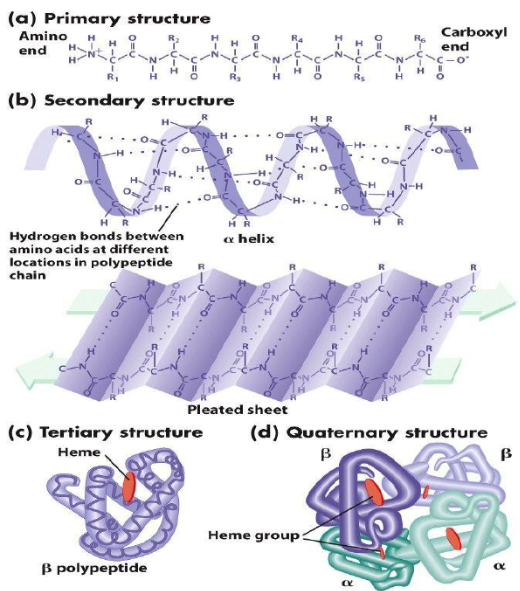
Tertiary Structure
When the helical structure of a protein is further folded and refolded to form a three-dimensional configuration, it is said to have a tertiary structure. Amino acids which are separated linearly on the chain are brought together or nearer due to this folding and they form a new bond to keep the structure together.
The active sites of enzymes are formed or exposed in this process. Eg, Egg protein, myoglobin, cytochrome, insulin, ribonucleotides, etc.
Quaternary Structure
The association of more than one polypeptide chain forms a stable unit called quaternary structure for the protein. In the case of human hemoglobin, four polypeptide chains with two alpha and 2 beta helices are associated together to form the quaternary structure.
Biological Significance of Proteins
- Several amino acids that are part of proteins serve as a storage of energy which will be released when it is required.
- Proteins play an important role in stabilizing the size and shape of the organisms.
- They are part of the cytoskeletal system of cells and thereby the organisms.
- Helps with the contraction of muscle fibres.
- Propulsion of microbes with a flagella.
- Proteins help the chromosomes separate during cell division.
- Proteins are necessary for nerve transmission, development, and differentiation of tissues.
- Some proteins such as nerve growth factor NGF, help with the regulation of gene expression.
- Regulatory molecules like hormones control the various cellular functions such as metabolism, reproduction, blood glucose regulation, thyroid stimulation, etc.
- Protective proteins produce antibodies, immunoglobulins, fibrinogen, blood clotting, interferons, etc.
References
- Ouellette, R. J., & Rawn, J. D. (2017). Amino Acids, Peptides, and Proteins. Organic Chemistry (Second Edition), 929-971. https://doi.org/10.1016/B978-0-12-812838-1.50029-3
- Elansary, Mahmoud. (2012). Prediction of protein aggregation inducing mutations.
